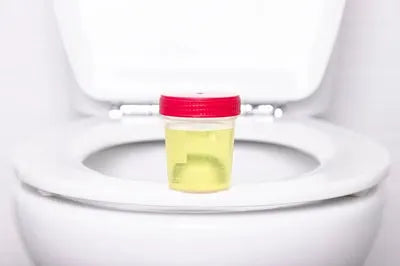Introduction
It often starts subtly. You might find yourself waking up at night more frequently to use the bathroom, or feeling like you can’t completely empty your bladder. Maybe you’ve chalked it up to age, stress, or drinking too much water before bed. But deep down, a quiet question lingers: Could it be my prostate?
For many men, these early signs come with uncertainty and worry. The prostate—a small, walnut-shaped gland tucked beneath the bladder—is easy to ignore until it begins to grow. As the years go by, it's not uncommon for it to enlarge, but when does a normal part of aging become something more serious? At what point does its size cross the line from manageable to dangerous?
If you're facing this concern—or supporting someone who is—know that you're not alone. Understanding the role prostate size plays in urinary and overall health is an important step toward clarity and care. In this article, we’ll gently walk through what enlarged prostate means, what size of prostate is dangerous, and what you can do to protect your well-being moving forward.
What is an Enlarged Prostate?
An enlarged prostate, also known medically as Benign Prostatic Hyperplasia (BPH), refers to the non-cancerous growth of the prostate gland. It's a common condition in men over the age of 50 and is largely influenced by hormonal changes that occur with ageing.
As the prostate enlarges, it can press against the urethra, causing urinary problems such as frequent urination, difficulty starting or stopping the urine stream, weak flow, and a sensation of incomplete bladder emptying. While BPH is not cancerous, it can significantly affect quality of life if left unmanaged.
Understanding Prostate Size
To assess prostate health, size measurement is a crucial diagnostic step. A healthy adult prostate typically measures around 20-25 grams (cc) in volume. However, as men age, a gradual increase in size is expected. For example:
-
In men aged 40–49, the average size is about 25–30 cc
-
By age 60, it can reach 30–40 cc
-
By age 80, it might exceed 40–50 cc
Doctors often use transrectal ultrasound (TRUS) or MRI to estimate prostate volume. These tools help determine whether the gland's size is within the age-appropriate range or if it's growing abnormally fast or large.
What Size of Prostate is Dangerous?
Now, let’s address the central concern—what size of prostate is dangerous? While there's no strict threshold that applies universally, a prostate exceeding 80–100 cc is often considered significantly enlarged and potentially dangerous.
At this size, the prostate can cause severe urinary obstruction, bladder damage, kidney dysfunction, and even lead to complications like urinary retention, where one is unable to urinate at all. In some extreme cases, prostates as large as 200 cc have been reported, which usually necessitate urgent surgical intervention.
So, what size of prostate is dangerous depends on multiple factors:
-
The presence and severity of symptoms
-
Rate of growth over time
-
Impact on the bladder and kidneys
-
The patient's overall health and lifestyle
If you’re wondering, what is the dangerous size of prostate that absolutely requires attention, most urologists would consider anything beyond 80 cc, particularly with persistent or worsening symptoms, to fall into the danger zone.
Also Read: Enlarged Prostate (BPH): Signs & Symptoms of Enlarged Prostate
Treatment Options for Enlarged Prostate
When prostate size becomes problematic, treatment may range from lifestyle adjustments to surgery. The choice largely depends on the severity of symptoms, the size of the gland, and any coexisting prostate problem like inflammation or infection.
1. Medications
-
Alpha-blockers: Help relax muscles of the bladder neck and prostate to ease urination.
-
5-alpha reductase inhibitors: Reduce the size of the prostate over time.
-
Combination therapy: A mix of both drugs can be more effective in larger prostates.
2. Minimally Invasive Procedures
-
Transurethral Microwave Therapy (TUMT)
-
Transurethral Needle Ablation (TUNA): These options are effective for moderate cases and involve less recovery time.
3. Surgical Options
-
TURP (Transurethral Resection of the Prostate): The gold standard surgery for removing excess tissue.
-
Laser surgeries (e.g., HoLEP, GreenLight): Suitable for very large prostates.
-
Open or robotic-assisted prostatectomy: Reserved for extremely large prostates, typically over 100–150 cc.
For men experiencing symptoms related to prostate problem, taking that first step toward medical evaluation can make all the difference—not just in preventing long-term complications, but in reclaiming comfort and confidence in daily life. Managing an enlarged prostate often means navigating challenges like urinary urgency and incontinence, which can quietly disrupt routines and peace of mind. During such times, many find relief in simple, thoughtful solutions. Friends UltraThinz Slim Fit Dry Pants for Men are designed with this very need in mind—discreet, comfortable, and reliable, they offer gentle support so you can move through your day with dignity and assurance.
Conclusion
The size of the prostate is a critical marker in men’s health, especially as they age. While natural growth is expected, knowing what size of prostate is dangerous helps determine when medical action is needed. Typically, a prostate larger than 80–100 cc with accompanying urinary issues or organ dysfunction is cause for concern.
Through timely diagnosis, appropriate treatment, and regular monitoring, men can manage prostate enlargement effectively. Don't ignore symptoms like frequent urination, straining, or interrupted flow—these could be signs that your prostate has grown beyond the safe limit.
If you're noticing changes or feeling concerned about your prostate health, don’t hesitate to speak with a healthcare professional — early guidance can bring clarity, reassurance, and the right care. Alongside medical support, small acts of preparation can go a long way in helping you feel like yourself again. That’s where something as thoughtful as Friends Premium Dry Pants can quietly step in — offering dependable comfort and gentle protection, so you can stay active and assured, without letting symptoms interrupt the rhythm of your everyday life. Because sometimes, a little support makes all the difference — especially when it comes from a friend.
Product Recommendations
FAQs
1. What is the normal prostate size by age?
The average prostate size in younger men is around 20–30 cc. By age 60, it may grow to 30–40 cc, and by 80, 40–50 cc is common. However, size alone doesn't confirm disease; symptoms and health effects are equally important.
2. What size of prostate requires surgery?
Surgery is usually recommended when the prostate exceeds 80–100 cc, especially if accompanied by urinary obstruction, recurrent infections, or kidney complications. Some men with prostates larger than 150 cc may need open or robotic-assisted procedures.
3. How do I get my prostate back to normal size?
You can reduce prostate size through medications like 5-alpha reductase inhibitors, lifestyle changes (avoiding caffeine, staying hydrated), and regular exercise. In severe cases, surgery may be needed to restore normal size and function.
4. What is the maximum size of the prostate?
There have been documented cases where the prostate reached over 200 cc. These are extreme and rare but typically involve severe symptoms and require immediate intervention.
5. What are the symptoms of a bad prostate?
Common signs include:
-
Frequent urination, especially at night
-
Difficulty starting or stopping urination
-
Weak stream
-
Sensation of incomplete emptying
-
Pain or discomfort in the pelvic region
These may signal BPH, prostatitis, or in some cases, prostate cancer. Always consult a doctor if you notice these signs.





















